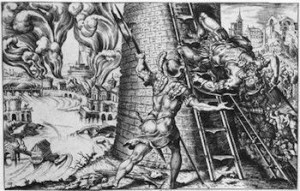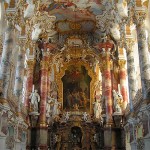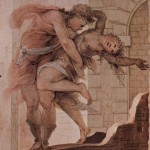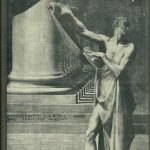 When Mannerism emerged as a field of art historical study during the first part of the twentieth century, it was construed as a moment of crisis. To proponents of Geistesgeschichte such as Max Dvořák, Walter Friedlaender, and Erwin Panofsky or Marxists like Friedrich Antal and Arnold Hauser, Mannerism became a token of crises, either of a philosophical and existential nature or an outcome of tensions in the socio-economic base. Much criticism of these scholarly approaches has since emerged from different ideological and methodological perspectives, including that of John Shearman who during the 1960s argued for a “stylish style,” indifferent to societal change. The aim of this session is not to rehearse the historiography but to . . . → En lire plus
When Mannerism emerged as a field of art historical study during the first part of the twentieth century, it was construed as a moment of crisis. To proponents of Geistesgeschichte such as Max Dvořák, Walter Friedlaender, and Erwin Panofsky or Marxists like Friedrich Antal and Arnold Hauser, Mannerism became a token of crises, either of a philosophical and existential nature or an outcome of tensions in the socio-economic base. Much criticism of these scholarly approaches has since emerged from different ideological and methodological perspectives, including that of John Shearman who during the 1960s argued for a “stylish style,” indifferent to societal change. The aim of this session is not to rehearse the historiography but to . . . → En lire plus
La SFDES recense les thèses en cours portant sur le XVIe siècle sur une page dédiée. Elle invite directeurs de recherche et doctorants à transmettre toutes les informations utiles concernant les doctorats en cours : nom, prénom, titre de la thèse, nom . . . → En lire plus
Female patronage of religious institutions (London, 4 Jun 20)
The Courtauld Institute of Art, London, June 04, 2020 Deadline: Apr 10, 2020
‘Remarkable women’: Female patronage of religious institutions, 1350-1550
This conference seeks to explore the ways in which women patronised and interacted with monasteries and religious houses during the late Middle Ages, how they commissioned devotional and commemorative art for monastic settings, and the ways in which these donations were received and understood by their intended audiences. The artistic donations of lay patrons to religious institutions has become a fruitful area of study in recent years, but the specific role played by women in these networks of patronage has been subject to less thorough scrutiny. Similarly too, the interests of female patrons have often been considered separately from the . . . → En lire plus
Intervenant : Pamela Bianchi (Paris 8)
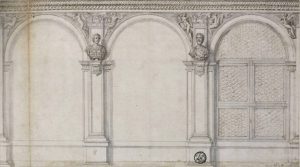 La Galerieta verso la Mostra (la galerie des Marbres ou des Mois); la Galeria Grande (la galerie de l’exposition construite vers 1592 pour rassembler des peintures modernes) ; le Coridore che guarda verso la Santa Barbara (couloir reliant deux sections du bâtiment, s’ouvrant au centre vers la basilique palatine, servant de lieu de stockage pour peintures et sculptures) ; le Logion Serato (galerie de miroirs, point d’appui de la structure d’exposition) ; le Passetto davanti al Camarino della Grotta et la Stanza contigua alla Libreria.
La Galerieta verso la Mostra (la galerie des Marbres ou des Mois); la Galeria Grande (la galerie de l’exposition construite vers 1592 pour rassembler des peintures modernes) ; le Coridore che guarda verso la Santa Barbara (couloir reliant deux sections du bâtiment, s’ouvrant au centre vers la basilique palatine, servant de lieu de stockage pour peintures et sculptures) ; le Logion Serato (galerie de miroirs, point d’appui de la structure d’exposition) ; le Passetto davanti al Camarino della Grotta et la Stanza contigua alla Libreria.
En 1626, ces lieux structuraient le palais ducal de la famille des Gonzague à . . . → En lire plus
 The Art and Industry of Stucco Decoration (Rome, 1-2 Oct 20)
The Art and Industry of Stucco Decoration (Rome, 1-2 Oct 20)
Rome, Istituto Svizzero, October 1 – 02, 2020 Deadline: Mar 29, 2020
Stucco decoration has been traditionally studied considering its formal and artistic qualities. Despite much research and numerous publications have explored the works of the stuccatori and their cultural context, there has been little attention on the “art and industry” of these artists, and on how their practical and technical “know-how” contributed to the great professional and artistic success that they enjoyed. Many stucco decorations all over Europe have been realized by masters coming from the region between Lombardy and Ticino and their working methods spread . . . → En lire plus
 La Société Française d’Études du Seizième Siècle (SFDES) organisera, le vendredi 17 janvier 2020, une journée doctorale intitulée Actualité de la recherche doctorale sur le seizième siècle.
La Société Française d’Études du Seizième Siècle (SFDES) organisera, le vendredi 17 janvier 2020, une journée doctorale intitulée Actualité de la recherche doctorale sur le seizième siècle.
Conçue pour favoriser le dialogue scientifique, cette journée permettra aux doctorantes et doctorants de présenter leurs sujets de thèse (pendant une dizaine de minutes) en s’attachant aux problèmes méthodologiques et épistémologiques qu’ils soulèvent.
Les propositions (1 page de texte maximum) sont à adresser à florence.alazard@univ-tours.fr avant le 15 septembre 2019, et seront soumises à l’appréciation du Conseil d’Administration de la SFDES qui établira le programme de la journée selon des critères . . . → En lire plus

La culture « hypericonique » et « hyperludique » de notre temps produit d’innombrables exemples du lien que le jeu et le sport entretiennent avec l’image et surtout, de l’impact social, de la force politique et de l’efficacité économique d’une telle association. Or, ce lien complexe a des racines anciennes et connaît un renouvellement profond au cours de la première modernité, lorsqu’on repense les codes comportementaux et l’articulation entre pratiques ludiques, identités sociales et espaces. Et c’est précisément entre le XVIe et le XVIIe siècle qu’on assiste à l’essor des représentations des jeux d’exercice se confrontant à la complexité du discours contemporain sur le jeu. Si ces scènes témoignent de l’émergence du « temps affranchi » dédié aux loisirs (comme l’ont souligné Burke et Arcangeli) et d’une répartition nouvelle de . . . → En lire plus
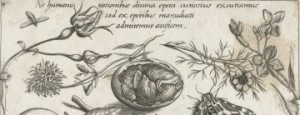 Mots, titres, légendes, commentaires, noms d’artistes, privilèges – car il en faut – beaux discours, adresses au « lecteur », voyantes dédicaces. Écritures cursives, typographiques, grands et petits caractères, ligatures, chiffres et mesures. Mots ajoutés, associés aux figures ou isolés par un cadre, mots que l’on remarque, que l’on suit du regard, que l’on découvre parfois dans l’image… Et si l’estampe était aussi une affaire de mots, de compositions écrites, de lectures croisées dans l’espace écrit et figuré d’une image ?
Mots, titres, légendes, commentaires, noms d’artistes, privilèges – car il en faut – beaux discours, adresses au « lecteur », voyantes dédicaces. Écritures cursives, typographiques, grands et petits caractères, ligatures, chiffres et mesures. Mots ajoutés, associés aux figures ou isolés par un cadre, mots que l’on remarque, que l’on suit du regard, que l’on découvre parfois dans l’image… Et si l’estampe était aussi une affaire de mots, de compositions écrites, de lectures croisées dans l’espace écrit et figuré d’une image ?
Avant que le rapport à l’écrit dans la création artistique ne soit entièrement repensé par les avant-gardes, l’estampe aura été pendant longtemps le seul art de l’image où les . . . → En lire plus
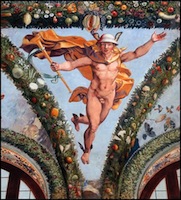 The Sixteenth Century Society and Conference (SCSC) is now accepting proposals for individual presentation proposals and complete panels for its annual conference, to be held 22-25 October 2015 at the Sheraton Wall Centre Hotel in Vancouver, British Columbia, Canada. The deadline for proposals is April 15, 2015. Within four weeks after the deadline, the Program Committee will notify all those who submitted proposals. The conference will once again host poster sessions.Scholars who intend to submit a poster proposal should obtain a poster session code prior to submitting their proposal by emailing: conference@sixteenthcentury.org.
The Sixteenth Century Society and Conference (SCSC) is now accepting proposals for individual presentation proposals and complete panels for its annual conference, to be held 22-25 October 2015 at the Sheraton Wall Centre Hotel in Vancouver, British Columbia, Canada. The deadline for proposals is April 15, 2015. Within four weeks after the deadline, the Program Committee will notify all those who submitted proposals. The conference will once again host poster sessions.Scholars who intend to submit a poster proposal should obtain a poster session code prior to submitting their proposal by emailing: conference@sixteenthcentury.org.
In addition to standard panels, the organizing committee will be accepting proposals for types . . . → En lire plus
XVIth International Baroque Summer Course of the Werner Oechslin Library Foundation, Einsiedeln.
The course is open to doctoral candidates as well as junior and senior scholars who wish to address the topic with short papers (20 minutes) and through mutual conversation. As usual, the course has an interdisciplinary orientation. We hope for lively participation from the disciplines of art and architectural history, but also from scholars of history, literature, theatre, sociology, and other relevant fields. Papers may be presented in German, French, Italian or English; at least a passive knowledge of German is a requirement for participation.
Conditions: The Foundation assumes the hotel costs for course participants, as well as several group dinners and . . . → En lire plus
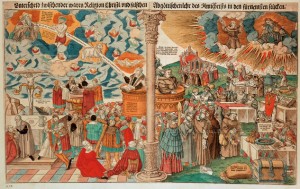 On the occasion of the 500th anniversary of Lucas Cranach the Younger’s (1515 – 1586) birth, numerous events will take place in 2015 to honour him. In the run-up to that year, the proposed symposium wishes to focus on the life and work of the artist. Since his father, Lucas Cranach the Elder, has been the main centre of interest of recent research and exhibitions, the aim of this conference is for the first time to delineate more precisely, and to devote proper critical attention to, the biography and oeuvre of his younger son. On this basis we hope to acquire new insights . . . → En lire plus
On the occasion of the 500th anniversary of Lucas Cranach the Younger’s (1515 – 1586) birth, numerous events will take place in 2015 to honour him. In the run-up to that year, the proposed symposium wishes to focus on the life and work of the artist. Since his father, Lucas Cranach the Elder, has been the main centre of interest of recent research and exhibitions, the aim of this conference is for the first time to delineate more precisely, and to devote proper critical attention to, the biography and oeuvre of his younger son. On this basis we hope to acquire new insights . . . → En lire plus
 London, Royal College of Art, April 10 – 12, 2014 Deadline: Nov 11, 2013
London, Royal College of Art, April 10 – 12, 2014 Deadline: Nov 11, 2013
CFP for the annual Association of Art Historians conference, 2014 at the Royal College of Art, London
New Approaches to Collecting (1400-1600) Session Convenor: Leah Clark
This panel seeks submissions that address new approaches to collecting in the early modern world. Scholars have long been attentive to the emergence of the studiolo in the Italian Renaissance and its relationship to humanism and the revival of classical culture, pursuing connections between art, antiquity, politics, knowledge, and power. Traditional approaches to collecting have tended to concentrate on collectors’ tastes within larger patronage studies, analysing inventories as lists of static objects, or by examining the iconographic programmes of . . . → En lire plus


